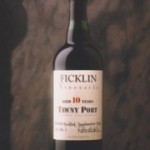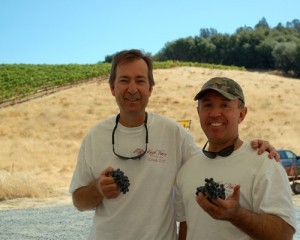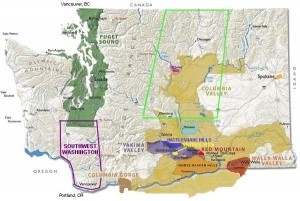Today, I’m going to regale you with information about Port - my favorite winter time beverage that is sure to take the edge off this frigid winter.
Some would suggest that port, like scotch, is an acquired taste. If so, I’ve acquired it! And I’m convinced that once you try the stuff with a good blue cheese or a handful of walnuts, you’ll be hooked too. But first, let’s take a look at the history of Port and how the wine is produced.
Port or Porto (as it is called in Portugal where it is produced) is made from a variety of grapes grown along the steep slopes of Douro River. In fact there are more than 80 varieties of grapes which are permitted to be used in the production of port, but most producers use less than 10. The most prominent port grapes are: Touriga Franca, Tinta Roriz, Tinta Barroca, Touriga Nacional, Tinto Cão and Tinta Amarela. Rolls right off the tongue, no?
The center of port production is the town of Oporto where the wine is sold to companies (called” Shippers”) who age it, label it under their house name and then export it all over the world.
Port is fortified which means that brandy is added to the fermenting wine. This causes the fermentation to stop, leaving about 10 percent residual sugar in the wine and also boosting the alcohol to about 20 percent. While port was produced in mainly a dry style for centuries, today’s sweet version was popularized by the British in the middle of the 18th century. Many Shippers are also British companies.
There are also some very good port-style wines produced in other countries, most notably Australia and the U.S. As a matter of fact, two of my favorite tawny ports are produced in these two countries and I’ll list them for you later. Port is made in several styles, among which are:
Vintage Port -This is the best and most expensive style and is produced only in exceptional years (only about three years a decade). A “vintage year” is usually declared by an agreement among the shippers and the wines are given special care and aging.
Once you buy it, vintage Port can age easily for 15 to 40 years before reaching maturity. Recent vintage Port years are 1977, 1979, 1983, 1986, 1991 and 1994, 1995, 1997, 1999, 2000 and 2003. You can pay anywhere from $50 to $150 a bottle for vintage port with the older, more prestigious years, commanding the highest price.
Late Bottled Vintage Port - Not to be confused with vintage port, this wine is a blend of ports from different vineyards in the same vintage year. Late bottled vintage port (or LBV) will have a vintage date on the label, but it is not vintage port. However, these wines are vinified in the same manner as vintage ports, except they are aged in barrel longer to accelerate their drinkability.
Ruby Port - Young port wine blends from several different vintages comprise ruby port. They are lighter and fruitier than other styles and usually the least expensive ports.
Tawny Port - I call this the poor man’s vintage port because it is aged for many years in oak and, when released, it is very smooth and rich like an old vintage port, though not as fine. Without a doubt, this is my go-to port and I’ll list a few of my favorites for you later. Most of the better tawnies are aged for 10, 20, 30 or 40 years and this fact is listed on the label. These wines can be found in a wide price range from under $10 to more than $30 a bottle depending on the age of the Tawny Port.
White Port - Made from white grapes, this is the only port-style wine that is dry. It is usually crisp, yet full-bodied, and makes a nice aperitif wine.
Okay, now here is a list of some of my favorite tawny port producers. Incidentally, these wineries also produce other types of port if you should wish to try them.
Ficklin and Quaddy (US) and Clocktower (Australia) are my favorite port-like wines produced outside Portugal. The rest of these producers are Portuguese: Warre’s, Graham’s, Taylor-Fladgate, Croft, Dow’s, Fonseca and Ramos-Pinto. Prices for 10-year old tawnies can range from about $10 to $40 dollars a bottle. If you can find it, try Ficklin’s 10-year old tawny – it’s absolutely delicious.
So grab yourself a bottle of Port, build a fire and sip the cold away.




